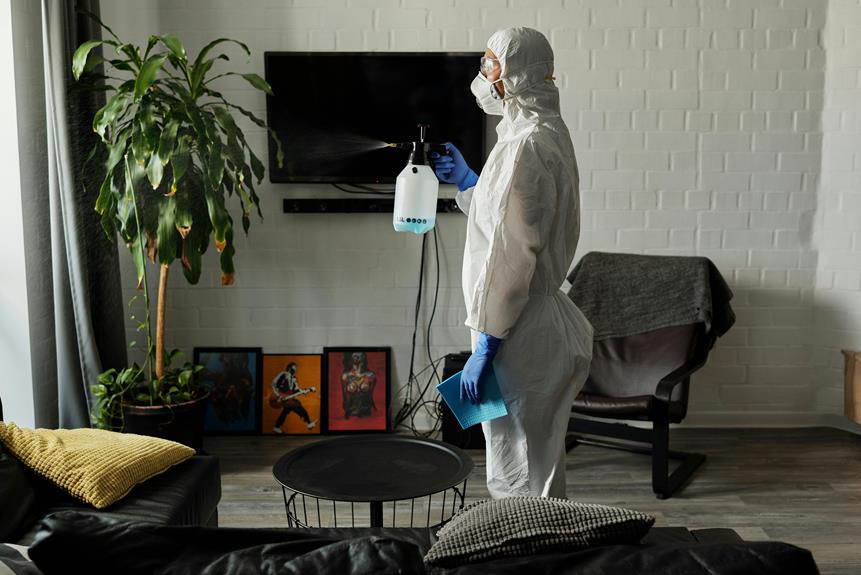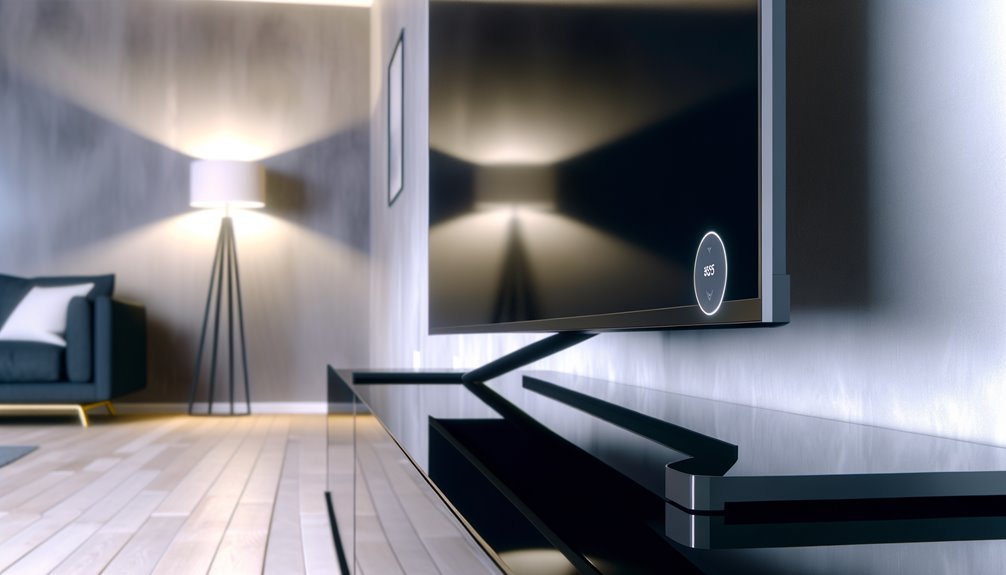Sky Glass's picture quality showcases limitations like faint black lines, washed-out colors, and pixelation, affecting overall smoothness. Comparing it to older models, you'd notice the mid-range QLED panel struggles with contrast ratios and color accuracy. Users report issues like blocky pixels and hazy whites when viewed from angles. To mitigate this, adjust settings such as disabling Auto backlight and enabling local dimming. Software updates and future tech like advanced mini-LED panels hold promise for improvements. For a deeper understanding of how it measures up and what to expect, there's more to uncover.
Key Information
- Users report pixelation and faint black lines affecting Sky Glass picture quality.
- Inconsistent UHD rendering and washed-out colors are common complaints.
- Hazy whites are noticeable when viewing from side angles.
- Older models offer better contrast ratios and color accuracy compared to Sky Glass.
- Software updates and potential future tech integrations may enhance picture quality.
Common Picture Quality Issues
When examining Sky Glass, you'll find that common picture quality issues include faint black lines, pixelation, and inconsistent UHD rendering. The faint black lines suggest potential backlight inconsistencies, which can detract from overall image clarity.
Pixelation often manifests in blocky pixels, reducing the smoothness of the visual experience. UHD rendering inconsistency can make high-definition content appear subpar. Additionally, some users report washed-out colors and hazy whites when viewed from an angle, indicating possible panel defects.
These issues not only affect the visual fidelity but also contribute to user dissatisfaction. Even replacement units have shown mixed results, with some users continuing to experience the same problems, suggesting systemic issues with the display technology in Sky Glass.
User Feedback and Reviews
Despite Sky Glass's innovative design, user feedback reveals a spectrum of dissatisfaction with its picture quality. Users often cite issues like pixelation, faint black lines, and subpar UHD rendering compared to competitors such as Samsung and LG OLED.
Users have noted that hazy images from side views detract from the overall viewing experience. Some have even reported that replacement units don't resolve these issues, prompting a switch to alternative solutions like the Stream puck.
Comparative analysis indicates that OLED models from Samsung or TCL outperform Sky Glass regarding clarity and color accuracy. Community discussions show a mix of opinions, but the consensus leans towards recommending more reliable models for those seeking superior picture quality.
Comparison With Older Models
In comparing Sky Glass to older models, it's evident that the mid-range QLED panel—already three years old—struggles to compete with the technological advancements found in both previous and newer TV models.
Older TVs often utilize more recent QLED iterations or even OLED technology, offering superior contrast ratios and color accuracy. Users have reported visible issues like blocky pixels and faint noise, particularly noticeable on various channels and streaming apps. These artifacts detract from the viewing experience, placing Sky Glass at a disadvantage compared to older, more refined models.
While adjustments like disabling Auto backlight adjustment and enabling local dimming can mitigate some issues, the inherent limitations of the aging QLED panel remain a critical concern.
Tips to Improve Quality
Given the inherent limitations of the aging QLED panel in Sky Glass, optimizing your TV's settings can greatly enhance the picture quality. Start by disabling Auto backlight adjustment and enabling local dimming for better contrast. Experiment with Vivid mode to see if it enhances your viewing experience. Community-recommended calibration settings can also provide substantial improvements.
Here's a quick settings comparison:
| Setting | Default Configuration | Recommended Adjustment |
|---|---|---|
| Auto Backlight Adjustment | On | Off |
| Local Dimming | Off | On |
| Picture Mode | Standard | Vivid |
| User Calibration | N/A | Community Settings |
These tweaks can bridge the gap, offering a more satisfying visual experience on your Sky Glass TV.
Future Technology Expectations
You can anticipate significant advancements in Sky Glass's picture quality through future technology updates and innovations. Enhanced image processing algorithms will aim for improved color accuracy and contrast, directly impacting your viewing experience.
Future iterations may incorporate advanced panel technologies like mini-LED or micro-LED, offering superior picture clarity and brightness.
- Software Updates: Expect ongoing enhancements via firmware updates to refine image processing.
- Advanced Panels: Integration of mini-LED or micro-LED panels for higher brightness and contrast.
- Collaborations: Potential partnerships with leading display technology providers to integrate cutting-edge features.
- Calibration Options: More sophisticated calibration options for customized picture settings.
These developments promise to elevate Sky Glass's picture quality, making it a frontrunner in the display technology market.
Frequently Asked Questions
Is Sky Glass a Good Picture Quality?
You might find Sky Glass's picture quality subpar when compared to newer models. Although the Sky F1 UHD channel excels, contemporary Samsung 4K Smart TVs often outperform due to advanced components and more recent technological upgrades.
How Can I Improve My Sky Glass Picture Quality?
To improve picture quality, disable auto backlight adjustment, enable local dimming, and experiment with Vivid mode. Manually adjusting settings and following community recommendations can compensate for hardware limitations, enhancing the viewing experience effectively.
What Are the Disadvantages of Sky Glass?
Sky Glass disadvantages include limited app availability, lack of advanced gaming features, and slower interface compared to competitors. You might also experience inconsistent software updates, and its mid-range QLED panel doesn't match newer OLED displays.
Is Sky Glass True 4k?
Sky Glass isn't true 4K. It employs a mid-range QLED panel from three years ago, resulting in noticeable pixelation and minor noise. For authentic 4K quality, consider OLED or micro-LED options, especially from brands like LG.
Conclusion
In analyzing Sky Glass's picture quality, you've encountered issues like motion blur and color accuracy. User reviews highlight mixed experiences, often comparing it unfavorably with older models.
To optimize your viewing, tweak settings like brightness and contrast. Future advancements in display technology could potentially address these concerns.
Overall, while Sky Glass offers modern features, its picture quality may not yet surpass previous generations, necessitating careful consideration before upgrading.



